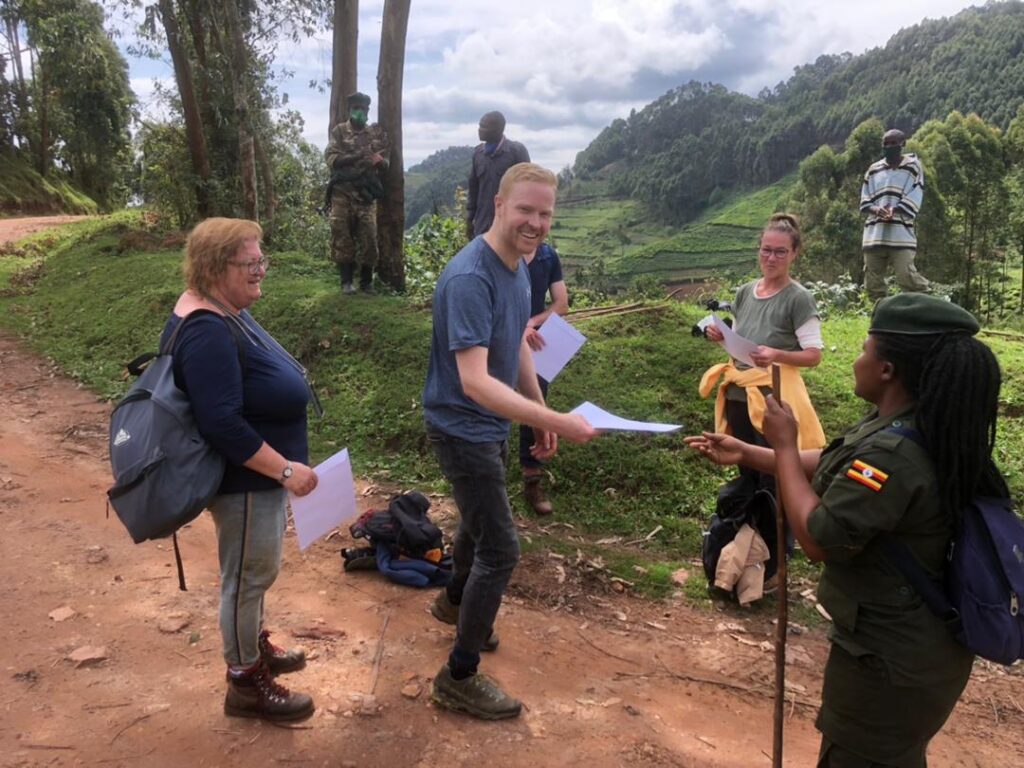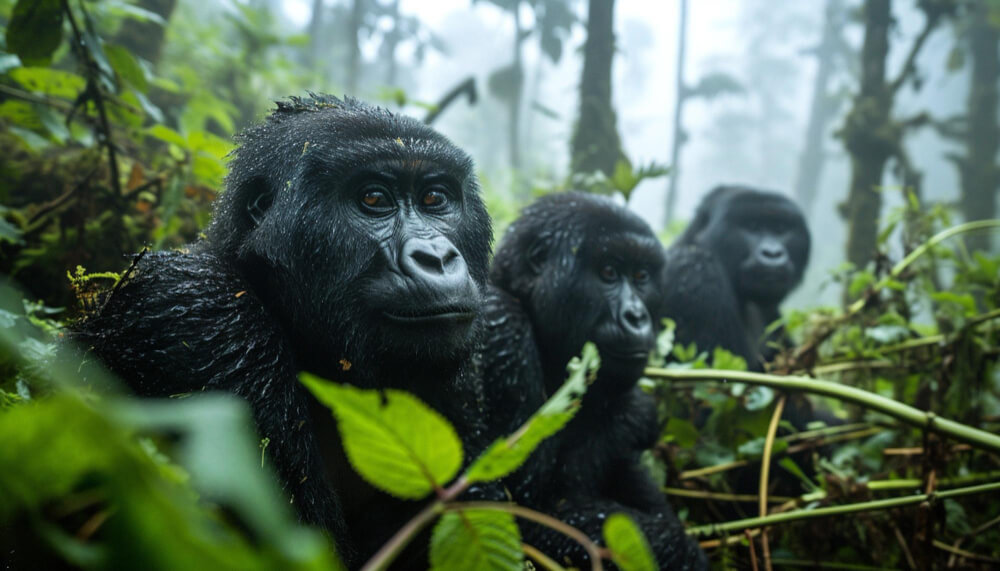What is Bwindi Impenetrable Forest Famous For?
Bwindi Impenetrable Forest Gorillas: What is Bwindi Impenetrable Forest Famous For?
Bwindi Impenetrable Forest Gorillas are found in the Bwindi Impenetrable Forest, Nestled in the southwestern corner of Uganda. They are a natural marvel that has captured the hearts and imaginations of many. This UNESCO World Heritage site is renowned for its remarkable biodiversity and as one of the most significant habitats for the endangered mountain gorillas.
Bwindi’s dense, lush forests and varied ecosystem make it a hotspot for ecotourism and a vital conservation area. This article delves into the key aspects that make Bwindi Impenetrable Forest famous, exploring its wildlife, conservation efforts, and the unique experiences it offers to visitors.

A Sanctuary for Mountain Gorillas
Bwindi Impenetrable Forest gorillas are perhaps best known for their population of mountain gorillas. This forest is home to almost half of the world’s remaining mountain gorillas, making it a critical sanctuary for these majestic creatures.
Gorilla trekking in Bwindi is a once-in-a-lifetime experience that allows visitors to observe these great apes in their natural habitat. The encounter is both awe-inspiring and humbling, providing a unique insight into the lives of one of our closest relatives in the animal kingdom.
Rich Biodiversity
Beyond its famous gorillas, Bwindi boasts a stunning array of biodiversity. The forest is home to over 120 species of mammals, including forest elephants, black-and-white colobus monkeys, and chimpanzees. Bird enthusiasts are also drawn to Bwindi, which hosts more than 350 bird species, some of which are endemic to the region. The vibrant array of flora and fauna makes every visit to Bwindi a new adventure, with the potential for discovering something extraordinary at every turn.
Conservation Efforts
Bwindi Impenetrable Forest gorillas are at the forefront of conservation efforts in Uganda. The forest’s unique ecosystem and endangered species necessitate ongoing preservation activities. Conservation programs in Bwindi focus on protecting the habitat, monitoring wildlife populations, and working with local communities to promote sustainable practices. These efforts have been instrumental in increasing the number of mountain gorillas and preserving the forest’s rich biodiversity.
Cultural Heritage and Community Involvement (Bwindi Impenetrable Forest gorillas )
The communities surrounding Bwindi Impenetrable Forest play a crucial role in its conservation. The Batwa pygmies, one of Uganda’s indigenous peoples, have lived in harmony with the forest for centuries. Cultural tours offer visitors the opportunity to learn about the Batwa’s traditional ways of life, their knowledge of the forest, and their role in its preservation. Engaging with the local communities not only enriches the visitor experience but also supports sustainable tourism practices that benefit the region.
Unique Tourist Experiences
Bwindi offers a variety of unique experiences beyond gorilla trekking. Hiking through the forest’s dense trails reveals breathtaking vistas and the serene beauty of its waterfalls and rivers. The Buhoma Village Walk, for instance, provides an immersive experience of the local culture, including traditional crafts and dances. Bird watching and nature walks are other popular activities, allowing visitors to fully appreciate the forest’s ecological wealth.

The Role of Bwindi in Scientific Research
Bwindi Impenetrable Forest is a hub for scientific research, particularly in the fields of primatology, botany, and ecology. Researchers from around the world come to study its unique ecosystems and the behavior of its wildlife. The knowledge gained from these studies is crucial for global conservation efforts and contributes to a broader understanding of biodiversity and sustainable ecosystem management.
Challenges and Future Prospects
Despite its fame and the ongoing conservation efforts, Bwindi Impenetrable Forest faces numerous challenges. Habitat destruction, human-wildlife conflict, and climate change pose significant threats to its delicate ecosystem.
However, the collaborative efforts of conservationists, researchers, and local communities provide hope for the future. By promoting sustainable tourism and continuing to raise awareness about the importance of conservation, Bwindi can remain a sanctuary for its remarkable wildlife and a source of wonder for generations to come.
Bwindi Impenetrable Forest, renowned for its mountain gorillas, also boasts incredible biodiversity and rich cultural heritage. This forest showcases nature’s beauty and complexity, offering a rare glimpse into a world where wildlife and human history merge.
Thanks to ongoing conservation efforts, Bwindi remains a crucial haven for endangered species and a symbol of environmental preservation. Whether you’re a wildlife enthusiast, researcher, or adventurer, Bwindi promises an unforgettable and extraordinary experience.
FAQs About Bwindi Impenetrable Forest gorillas
What makes Bwindi Impenetrable Forest a UNESCO World Heritage site?
Bwindi is recognized for its exceptional biodiversity and as one of the most critical habitats for the endangered mountain gorillas.
How can visitors experience the mountain gorillas in Bwindi?
Visitors can go on guided gorilla trekking tours, which allow them to observe mountain gorillas in their natural habitat.
What other wildlife can be found in Bwindi Impenetrable Forest?
Bwindi is home to over 120 mammal species, including elephants and chimpanzees, as well as more than 350 bird species.
How do local communities contribute to Bwindi’s conservation?
Local communities, including the Batwa pygmies, are involved in sustainable tourism and conservation practices that protect the forest and its wildlife.
What are some of the conservation challenges faced by Bwindi?
Challenges include habitat destruction, human-wildlife conflict, and climate change, all of which threaten the forest’s ecosystem.
Can tourists engage in activities other than gorilla trekking in Bwindi?
Yes, tourists can enjoy bird watching, nature walks, cultural tours, and hikes to explore the forest’s diverse landscapes and rich cultural heritage.